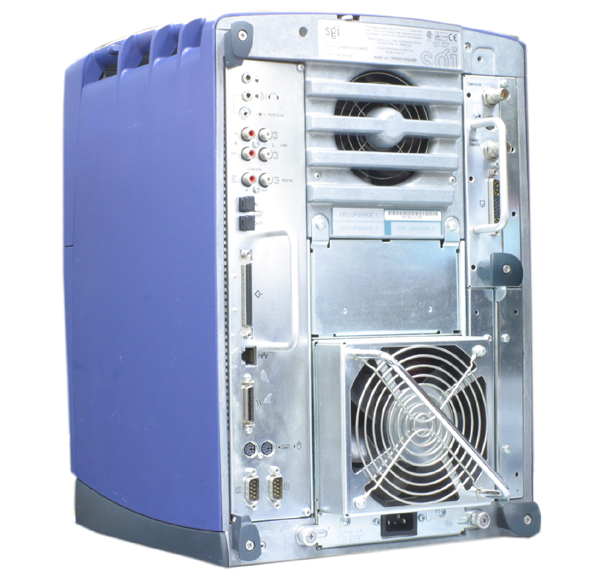I "obtained" an irix 6.5 disk. I decided to put it in, and hit install software. it started a copying progress bar, and soon as it finished, screen when "out of range" while the HDD was still loading stuff.
The software installation procedure is not graphical at all. It's been a while, but I believe that the installation kernel (the "miniroot") uses the standard 1280x1024@60 resolution. Many SGI displays are fixed-frequency at that rate.
The classic reference for Indys is
http://www.nekochan.net/reputable/indytech.html
; I found there that the Indy starts its graphics at 1024x768@60, which is a little surprising. You have to set the prom variable "monitor" to h in order to make the machine start up using high resolution, which makes it different from every other machine. What happens when IRIX 6.5 (or its miniroot) starts is it resets the resolution to a stored value set with the
setmon
command.
Something about your "VGA circuit" comments smelled strange to me, so I searched for "viewsonic E70 specifications" and saw repeated reference to a "flicker-free 1024x768 refresh rate". Eventually I found the manual which only confirms a few resolutions, including 1024x768@75 and 85, and 1280x1024@60. This means that 1280x1024@72 Hz, which is a common SGI resolution, is not supported by the monitor. Evidently that is what is being selected when you start IRIX. The other monitor you mentioned at the beginning of the thread doesn't support it either.
I think SGI is a little bit too advanced for what I am willing to get into, and it doesnt appear its going to be an easy fix.
From everything that you have said, it now appears certain that it would work as intended if you simply used a better monitor. In hindsight it's ridiculous that such a thing take 3 years to be said.






